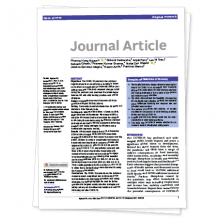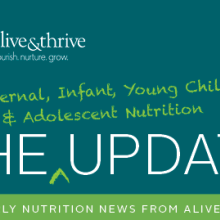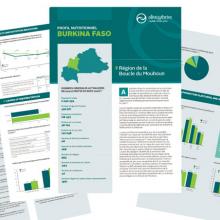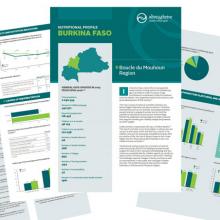Journal article
Jul 16 2020

Achieving behaviour change at scale: Alive & Thrive’s infant and young child feeding programme in Bangladesh (Sanghvi, T., 2016. Maternal & Child Nutrition)
This article details Alive & Thrive’s effective strategies, approaches, and intervention design to scale-up of IYCF interventions in Bangladesh from 2010 to 2014. Keys to scale-up included synergistic partnerships with NGOs, like-minded stakeholders, and donors.
Announcement
Jun 01 2020

The Maternal, Infant, Young Child & Adolescent Nutrition Update newsletter
Click below to read past editions of the MIYCAN Update is Alive & Thrive's quarterly global newsletter.
Handout
Apr 21 2020

Profils nutritionnels de six régions du Burkina Faso
Handout
Apr 21 2020

Burkina Faso Nutrition Profiles for Six Regions
These nutrition profiles present MIYCN data for six regions of Burkina Faso, including data on health and nutrition indicators, causes of undernutrition, nutrition promotion platforms and antenatal and child health care, and global nutrition targets.
Journal article
Feb 25 2020

The cost of not breastfeeding: global results from a new tool (Walters, D., 2019. Health Policy and Planning)
A billion dollars and two thousand lives, every day. This impactful study, which is the foundation for Alive and Thrive’s online tool, examines the human and economic costs of not breastfeeding.
Journal article
Nov 15 2019

Predictors of exclusive breastfeeding across three time points in Bangladesh (Blackstone SR., 2018. International Health)
This study explored predictors of exclusive breastfeeding (EBF) in Bangladesh using data from the Bangladesh Demographic and Health Survey from 2007, 2011, and 2014, focusing on reasons why rates of EBF changed over those time periods.

